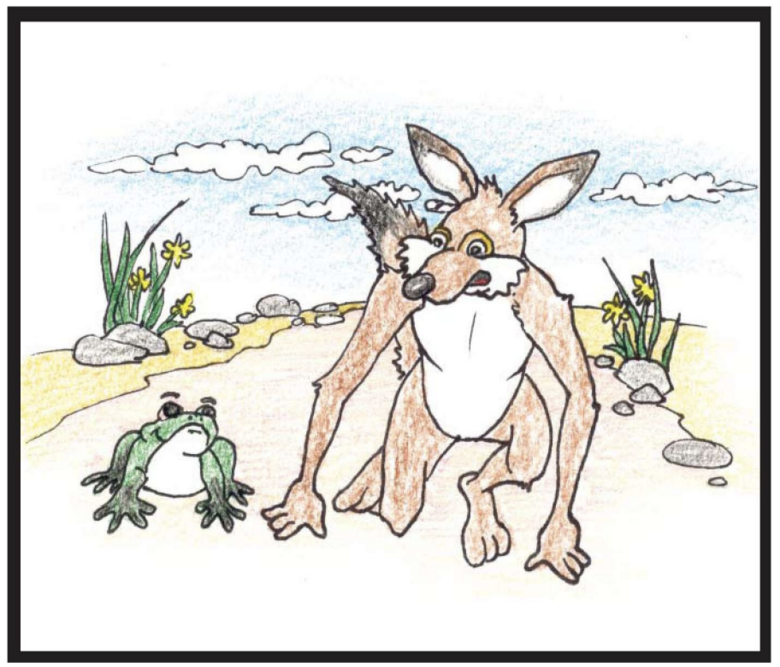- Author:
- Katie Blunt
- Subject:
- Elementary English Language Arts, Social Studies
- Material Type:
- Lesson Plan
- Level:
- Lower Elementary, Upper Elementary
- Provider:
- Utah State Board of Education
- Tags:
- License:
- Public Domain Dedication
- Language:
- English
- Media Formats:
- Text/HTML
Education Standards
CoyoteFrogConceptMap
CoyoteFrogStoryImpression
CoyoteFrogStoryMap
CoyoteFrogSummary
Coyote and Frog Race Lesson Plan

Overview
| |
| Lesson Plan Author: Patricia Helquist |
Summary
The students will create a story map for "Coyote and Frog Race." They will also create a simulated journal entry from the point of view of one of the characters.
- Time frame: 1 class period of 45 minutes
- Group Size: Large Groups
- Authors: Patricia Helquist
- Life Skills: Communication
- Materials: a copy of "Coyote and Frog Race: A Goshute Tale" (file attached) and a journal for each student
Background for Teachers
| According to Goshute tradition, Coyote tales should only be told during the wintertime. Traditional Goshute elders are botanists. They use many herbs and plants from the area for food, medicine, and spiritual healing. This Goshute story booklet is part of the Native American Indian Literacy Project storybook series for the six main Utah Tribal Nations. The project was led by Shirlee A. Silversmith, American Indian education specialist for the Utah State Office of Education. There are five stories per Tribe, with a total of 30 booklets, plus an ABC book. The set of Indian Tribal stories may be utilized by elementary classroom teachers to (1) develop an understanding and appreciation of Native American culture and societal contributions (2) provide a genre of text for the application of reading strategies, and (3) facilitate the mastery of various Utah Core Content Curriculum objectives. The Native American Indian Literacy Project was made possible by funds from the Utah State Office of Education (USOE). It is a joint effort of the USOE and San Juan School District Media Center. |
The Goshute booklet used in this lesson is part of the Native American Indian Literacy Project storybook series for the six main Utah Tribal Nations. The booklet was formatted to be printed and assembled. This means that it does not read well when used electronically because the pages will appear out of order. If a teacher did want to use the booklet in an electronic format, they would be best off screenshotting the pages and arranging them in a slide presentation. |
Step 1 - Goals and Outcomes
Students will recognize and identify the various parts of a story map.
Step 3 - Instruction
See detailed lesson plan (attached file).
Use the attached handouts during the lesson.
Step 4 - Assessments
Have the students write in their journals about a time when they have worked with someone else to solve a problem. Have them relate this to how the frogs worked to win the race with Coyote.
Bibliography
"Coyote and Frog Race: A Goshute Tale" Cultural Consultants: Genevieve Fields and Chrissandra Murphy


